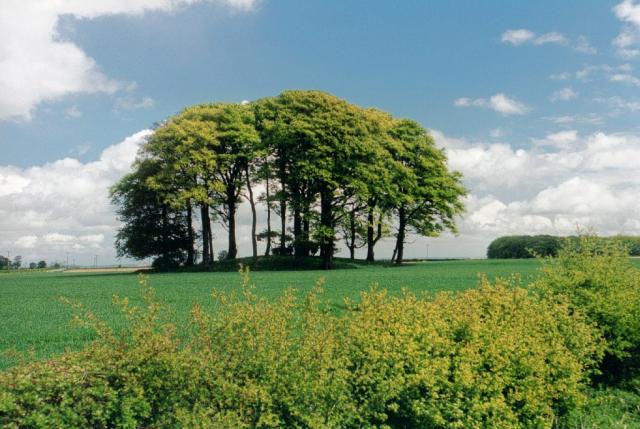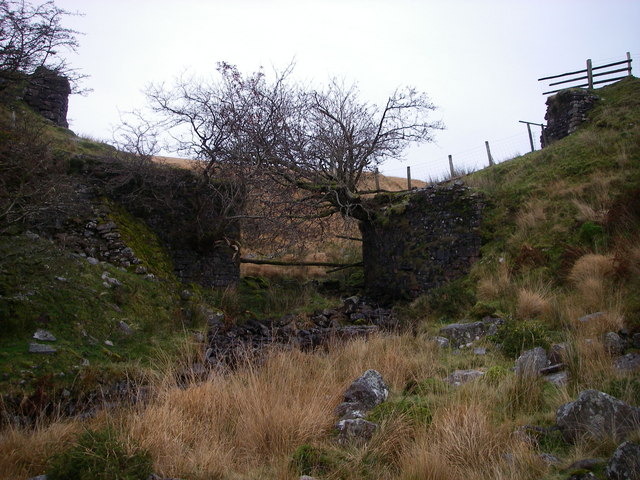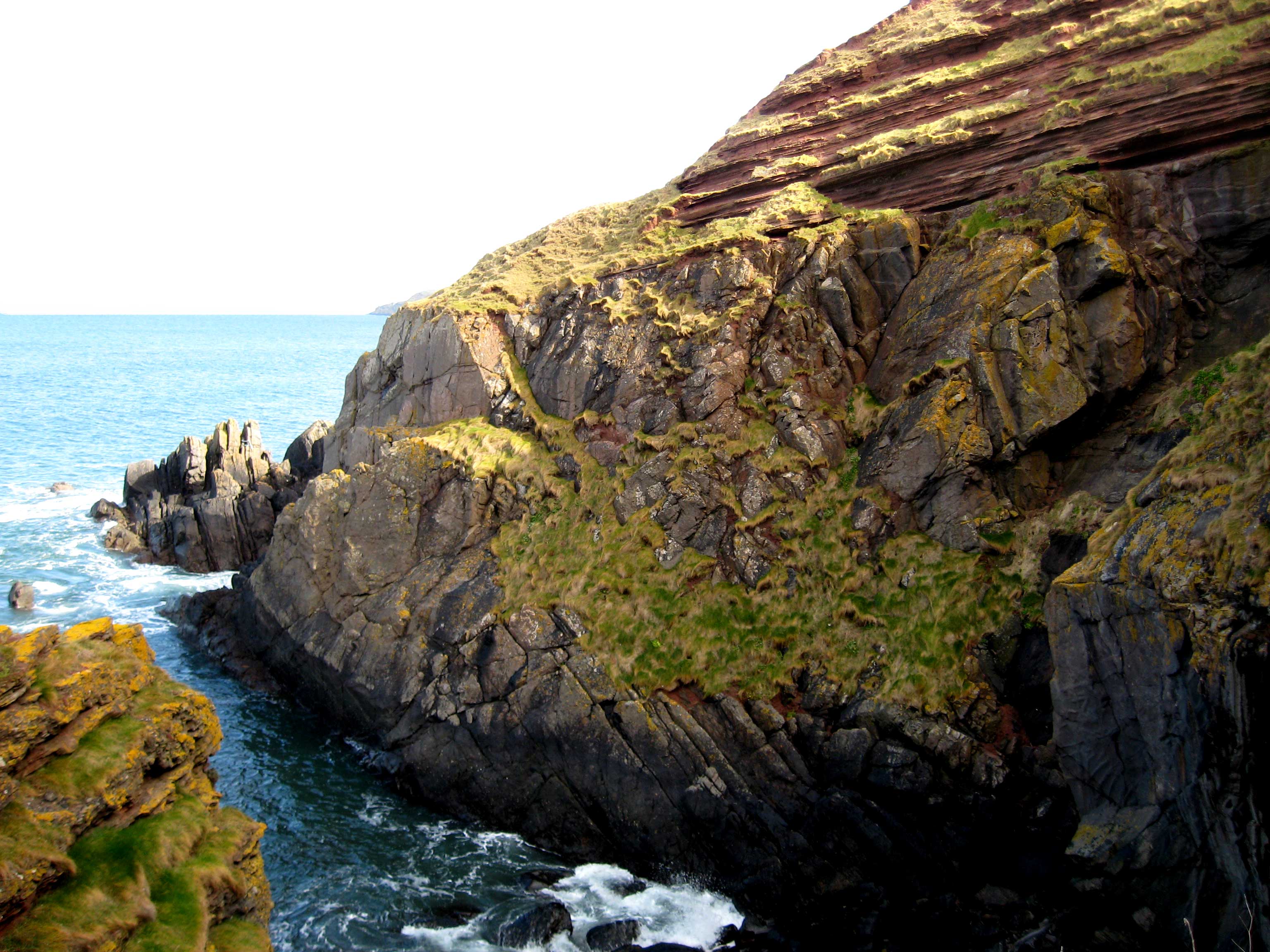|
Fan Gyhirych
Fan Gyhirych is a mountain in the Fforest Fawr section of Brecon Beacons National Park in south Wales. It lies within the county of Breconshire, and administered as part of the unitary authority of Powys Powys ( , ) is a Principal areas of Wales, county and Preserved counties of Wales, preserved county in Wales. It borders Gwynedd, Denbighshire, and Wrexham County Borough, Wrexham to the north; the English Ceremonial counties of England, ceremo .... Its highest point at 2379 feet (or 725 m) is marked by a trig point which is located towards the western side of the summit plateau. The hill drains to the north into the catchment of the Afon Crai and to the south and west into that of the River Tawe. Fan Fraith is a nearby hill which can be considered a subsidiary top of Fan Gyhirych. Geology The hill is formed largely from sandstones of the Brownstones Formation of the Old Red Sandstone laid down during the Devonian period. A part of the summit plateau is ca ... [...More Info...] [...Related Items...] OR: [Wikipedia] [Google] [Baidu] |
Pen Y Fan
Pen y Fan () is the highest peak in South Wales, situated in Brecon Beacons National Park (Bannau Brycheiniog). At above sea-level, it is also the highest British peak south of Cadair Idris in Snowdonia. It is the highest point (List of counties of England and Wales in 1964 by highest point, county top) of the historic county of Brecknockshire (though in modern administrative terms, it now lies within the unitary council area of Powys). The twin summits of Pen y Fan and Corn Du at were formerly referred to as Cadair Arthur or 'Arthur's Seat'. The mountain and surrounding area are owned by the National Trust for Places of Historic Interest or Natural Beauty, National Trust whose work parties attempt to combat the erosion caused by the popularity of this peak with walkers. The mountain is used by the Ministry of Defence (United Kingdom), military as part of the United Kingdom Special Forces Selection, selection process of the United Kingdom, UK's United Kingdom Special Forces, S ... [...More Info...] [...Related Items...] OR: [Wikipedia] [Google] [Baidu] |
Trig Point
A triangulation station, also known as a trigonometrical point, and sometimes informally as a trig, is a fixed surveying station, used in geodetic surveying and other surveying projects in its vicinity. The station is usually set up by a mapping organisation with known coordinates and elevation published. Numerous stations are installed on summits for purposes of visibility and prominence. A graven metal plate on the top of a pillar may provide a mounting point for a theodolite or reflector, often using some form of kinematic coupling to ensure reproducible positioning. Use Trigonometrical stations form networks of triangulation. Positions of land boundaries, roads, railways, bridges and other infrastructure can be accurately located by the network, a task essential to the construction of modern infrastructure. Apart from the known stations set up by government, some temporary trigonometrical stations are set up near construction sites for monitoring the precision and progr ... [...More Info...] [...Related Items...] OR: [Wikipedia] [Google] [Baidu] |
Marilyns Of Wales
This is a list of Marilyn hills and mountains in the United Kingdom, Ireland and surrounding islands and sea stacks. Marilyns are defined as peaks with a prominence of or more, regardless of height or any other merit (e.g. topographic isolation, as used in Munros). Thus, Marilyns can be mountains, with a height above , or relatively small hills. there were 2,010 recorded Marilyns. Definition The Marilyn classification was created by Alan Dawson in his 1992 book ''The Relative Hills of Britain''. The name Marilyn was coined by Dawson as a punning contrast to the ''Munro'' classification of Scottish mountains above , but which has no explicit prominence threshold, being homophonous with (Marilyn) '' Monroe''. The list of Marilyns was extended to Ireland by Clem Clements. Marilyn was the first of several subsequent British Isles classifications that rely solely on prominence, including the P600s, the HuMPs, and the TuMPs. Topographic prominence is more difficult to est ... [...More Info...] [...Related Items...] OR: [Wikipedia] [Google] [Baidu] |
Mountains And Hills Of Powys
A mountain is an elevated portion of the Earth's crust, generally with steep sides that show significant exposed bedrock. Although definitions vary, a mountain may differ from a plateau in having a limited summit area, and is usually higher than a hill, typically rising at least above the surrounding land. A few mountains are isolated summits, but most occur in mountain ranges. Mountains are formed through tectonic forces, erosion, or volcanism, which act on time scales of up to tens of millions of years. Once mountain building ceases, mountains are slowly leveled through the action of weathering, through slumping and other forms of mass wasting, as well as through erosion by rivers and glaciers. High elevations on mountains produce colder climates than at sea level at similar latitude. These colder climates strongly affect the ecosystems of mountains: different elevations have different plants and animals. Because of the less hospitable terrain and climate, mountains t ... [...More Info...] [...Related Items...] OR: [Wikipedia] [Google] [Baidu] |
Summits On The Air
Summits On The Air (SOTA) is an amateur radio operating award program launched in Great Britain in 2002 by John Linford. The aim of SOTA is to encourage licensed amateur radio operators to operate temporarily from mountainous locations using any method of travel including hiking, mountain climbing, and cycling while operating their amateur radio station from the summits of hills and mountains. In addition to getting operators out into the field the program encourages others to listen in to the transmissions from these stations and send in reports. In areas that are not remote or difficult to access some SOTA activations serve as community outreach events. The program now has ove33,842 participants world wide with about 7,000 in the United States. Amateur radio operators who set up stations on mountain peaks are known as activators, and other amateur radio operators who complete contacts with them are called chasers. Points are given to both activators and chasers based on how high ... [...More Info...] [...Related Items...] OR: [Wikipedia] [Google] [Baidu] |
Neath And Brecon Railway
The Dulas Valley Mineral Railway was incorporated in 1862 to bring coal from the Onllwyn area north-east of Neath to the quays there, and in the following year was reconstituted as the Neath and Brecon Railway. The line was opened as far as Onllwyn in 1863. The directors allowed a contractor John Dickson a free hand in building the line and when he became bankrupt the company was in a desperate financial situation. Nevertheless, the line was completed to Brecon in 1867, and an offshoot to connect with the Swansea Vale Railway, giving better access to Swansea, was ready in 1873. The larger Midland Railway acquired rights over the line and ran a heavy mineral train service for many years, although the remote and difficult course of the line was expensive to operate. After the 1922 "Grouping" of the railways, a pooling agreement led to the diversion of the heavy traffic to routes that were easier to work over, and the line reverted to a quiet and remote rural line. The passenger se ... [...More Info...] [...Related Items...] OR: [Wikipedia] [Google] [Baidu] |
Brecon Forest Tramroad
The Brecon Forest Tramroad is an early nineteenth century Tramway (industrial), tramroad, or rather a network of connecting tramroads or waggonways, which stretched across the hills of Fforest Fawr in the historic county of Brecknockshire (modern administrative county of Powys) in south Wales, UK. Its northern terminus was at the village of Sennybridge in the River Usk, Usk Valley whilst its southern ends lay at Abercraf and Ystradgynlais in the upper Swansea Valley some to the south. The tramroad project was conceived by John Christie (industrialist), John Christie, a Scottish-born entrepreneur based in London who had amassed a fortune from his involvement in the indigo trade with India. This enabled him to purchase the Crown Allotment of the Great Forest of Brecon (or Fforest Fawr) on its sale by the Crown in 1819. Construction of the tramroad was an essential part of his plans for the exploitation of his property. His original intention was to use the tramroad to convey limest ... [...More Info...] [...Related Items...] OR: [Wikipedia] [Google] [Baidu] |
Fforest Fawr Geopark
Fforest Fawr Geopark is a Geopark in the Brecon Beacons National Park, south Wales. It is the first designated Geopark in Wales having gained membership of both the European Geoparks Network and the UNESCO-assisted Global Network of National Geoparks in October 2005. The Geopark aims to promote and support sustainable tourism and other opportunities to improve the economy of the area whilst safeguarding the natural environment. Its aims largely coincide with the statutory duties and purpose of the National Park within which it sits. History of designation An initial application to the European Geoparks Network (EGN) made for a more geographically restricted Geopark based on the upper Swansea Valley was turned down in 2003 but the present area which extends to was accepted by the EGN at their meeting in October 2005. A Geopark Development Officer was appointed in January 2007 whilst the National Park Authority also employs an education officer part of whose time is dedicate ... [...More Info...] [...Related Items...] OR: [Wikipedia] [Google] [Baidu] |
Devonian Period
The Devonian ( ) is a geologic period and system of the Paleozoic era during the Phanerozoic eon, spanning 60.3 million years from the end of the preceding Silurian period at million years ago ( Ma), to the beginning of the succeeding Carboniferous period at Ma. It is the fourth period of both the Paleozoic and the Phanerozoic. It is named after Devon, South West England, where rocks from this period were first studied. The first significant evolutionary radiation of life on land occurred during the Devonian, as free- sporing land plants (pteridophytes) began to spread across dry land, forming extensive coal forests which covered the continents. By the middle of the Devonian, several groups of vascular plants had evolved leaves and true roots, and by the end of the period the first seed-bearing plants ( pteridospermatophytes) appeared. This rapid evolution and colonization process, which had begun during the Silurian, is known as the Silurian-Devonian Terrestrial Revo ... [...More Info...] [...Related Items...] OR: [Wikipedia] [Google] [Baidu] |
Old Red Sandstone
Old Red Sandstone, abbreviated ORS, is an assemblage of rocks in the North Atlantic region largely of Devonian age. It extends in the east across Great Britain, Ireland and Norway, and in the west along the eastern seaboard of North America. It also extends northwards into Greenland and Svalbard. These areas were a part of the paleocontinent of Euramerica (Laurussia). In Britain it is a lithostratigraphic unit (a sequence of rock strata) to which stratigraphers accord supergroup status and which is of considerable importance to early paleontology. The presence of ''Old'' in the name is to distinguish the sequence from the younger New Red Sandstone which also occurs widely throughout Britain. Sedimentology The Old Red Sandstone describes a group of sedimentary rocks deposited in a variety of environments in the late Silurian, through the Devonian and into the earliest part of the Carboniferous. The body of rock, or facies, is dominated by terrigenous deposits and co ... [...More Info...] [...Related Items...] OR: [Wikipedia] [Google] [Baidu] |
River Tawe
The River Tawe (; ) is a long river in South Wales. Its headwaters flow initially east from its source below Llyn y Fan Fawr south of Glasfynydd Forest, Moel Feity in the Black Mountain (range), Black Mountains, the westernmost range of the Brecon Beacons National Park, before the river turns south and then southwest to its estuary at Swansea. Its main tributaries are the right bank Upper Clydach River, Upper and Lower Clydach Rivers and the Afon Twrch, with Nant-y-fendrod joining on the left bank. The total area of the catchment is some . The Tawe passes through a number of towns and villages including Ystradgynlais, Ystalyfera, Pontardawe, and Clydach, Swansea, Clydach and meets the sea at Swansea Bay below Swansea. The Tawe Valley ( in Welsh language, Welsh) is more commonly known as the Swansea Valley. Ownership of the riverbed was granted to the Duke of Beaufort in the 17th century by Charles II of England, Charles II resulting in exclusive mineral and fishing rights, ... [...More Info...] [...Related Items...] OR: [Wikipedia] [Google] [Baidu] |
Afon Crai
The Afon Crai is a river in Powys, Wales rising in the Fforest Fawr section of the Brecon Beacons National Park and flowing north into the River Usk. The headwaters known as Blaen-crai flow north from Bwlch Bryn-rhudd, a col between the Crai valley and the upper Swansea Valley for 2 km into the Cray Reservoir. The river emerges from below the dam to flow a further 8 km through the dispersed settlement of Crai (or 'Cray'). In common with other tributaries of the River Usk and the Usk itself, the Afon Crai is designated as a special area of conservation for its three species of lamprey, twaite shad, European bullhead, Atlantic salmon and otter Otters are carnivorous mammals in the subfamily Lutrinae. The 13 extant otter species are all semiaquatic, aquatic, or marine. Lutrinae is a branch of the Mustelidae family, which includes weasels, badgers, mink, and wolverines, among .... References Rivers of Powys Rivers of the Brecon Beacons National ... [...More Info...] [...Related Items...] OR: [Wikipedia] [Google] [Baidu] |








